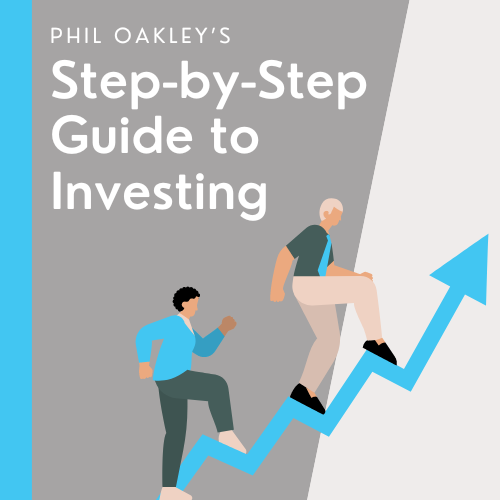Happy New Year! Hopefully you have come back refreshed and energised, ready to compete in what is one of the world’s most competitive arenas.

As the new year begins, traders everywhere are setting fresh goals and looking to make the most of a clean slate. It’s natural to want to start the year strong – especially if you’re carrying momentum from a successful December. Or you might even feel the pressure to bounce back from a rough end to the previous year.
But there’s a real danger in trying to hit January too hard. Trading too large in January can lead to devastating losses that impact not just your account balance but your entire mindset for the months ahead.
This is because January often feels like a pivotal month. The New Year’s Resolutions are set, and many losing traders tell themselves that this will be the year they finally decide to start cutting losses and committing to becoming profitable.
It’s easy to get caught up in this excitement as tipsters are wheeling out their picks and global banks are shouting out their end of year targets by placing bigger trades and aiming for quick wins.
However, markets don’t care about your personal goals or timelines.
They operate independently of your expectations.
If you start by over-leveraging and/or oversized positions, you’re essentially betting that everything will go perfectly, which is a dangerous assumption.
The psychological impact of early losses
One of the worst things that can happen to a trader in January is taking a significant loss.
When you start the year heavily in the red, the psychological fallout can be severe and create a negative cycle for performance.
First of all, we have loss aversion. A big early loss can trigger the urge to chase losses and take impulsive trades in an attempt to “break even.” This mindset often leads to further losses, creating a vicious cycle.
This can result in increased pressure. Because instead of trading from a position of strength and confidence, you’ll feel like you’re climbing uphill. This added pressure can cause you to abandon your strategy in favour of short-term and potentially dangerous emotional decisions.
And because of that increased pressure, a bad start to the year can erode your confidence. You may begin to question your system and yourself, which can lead to inconsistent execution or overcorrection in your trading.
Why January losses can hurt more
Unlike losses later in the year, losses in January can feel disproportionately impactful because they set the tone.
Many traders experience what is known as “calendar bias”. This is the feeling that a poor January means the entire year is doomed. This mindset can weigh heavily on your decision-making and lead to fear-based or reckless trading in the following months.
In reality, January is just one of 12 months, but when you’re psychologically rattled from an early setback, it can feel much larger than it actually is.
Avoiding the January trap
The good news is that you can avoid this pitfall by adopting a few key strategies. Here’s how to approach January without letting it define your entire year:
1. Start small and build momentum
You don’t need to hit your annual profit target in January alone. Instead of taking large positions and chasing early wins, focus on smaller trades that help you get a feel for the market.
January is a great time to observe market behaviour, ease into the flow of things, and let the opportunities come to you.
As one trader smarter than I once said: “You can’t make your year in January but you can certainly blow it”.
2. Stick to your process and not your emotions
The excitement of a new year can tempt you into abandoning your usual discipline. But your edge in the market comes from consistency. Stick to your trading plan and avoid trades that don’t align with your strategy, even if they “feel” like a good idea at that moment.
3. Implement strict risk controls
Set specific risk limits for January. For example, you could limit your maximum loss for the month to a small percentage of your capital. If you reach that limit, step back and reassess. This prevents you from spiralling into significant drawdowns that could take months to recover from.
4. Keep perspective
January is just one month out of the year. A great January doesn’t guarantee a great year, and a poor January doesn’t doom you to failure. Many successful traders start the year cautiously, knowing there’s plenty of time to generate returns. Don’t let one month distort your long-term outlook.
You need to survive bad months to participate in the good ones. That’s why taking a cautious approach in January makes sense. It keeps you in the game.
It’s also important to protect your psychological capital. Staying calm and confident is just as important as protecting your physical capital. The markets can be unpredictable, and your ability to think clearly under pressure is one of your most valuable assets.
I’ve learned these lessons the hard way. I’ve had starting months where I felt invincible, only to be humbled because I took on too much risk and had an unexpected market move in later months.
Those experiences taught me that restraint and patience are often more valuable than aggressive trading – especially at the start of the year.
Final thoughts
January is a fresh start, but it’s not a sprint. Don’t let the excitement of a new year push you into taking unnecessary risks. By managing your position sizes, sticking to your strategy, and controlling your risk, you can set yourself up for a strong, steady year rather than a volatile one.
Remember, this is a long-term game with long-term rewards. No getting rich quick (at least not that I’ve found).
Trading isn’t about one big win – it’s about small, consistent actions that compound over time. Avoid the January trap, and give yourself the best chance to succeed over the full year ahead.
Let’s hope 2025 is a successful one for us both!
~
Michael Taylor
Get Michael’s trade ideas: https://newsletter.buythebullmarket.com/
This article is for educational purposes only. It is not a recommendation to buy or sell shares or other investments. Do your own research before buying or selling any investment or seek professional financial advice.



